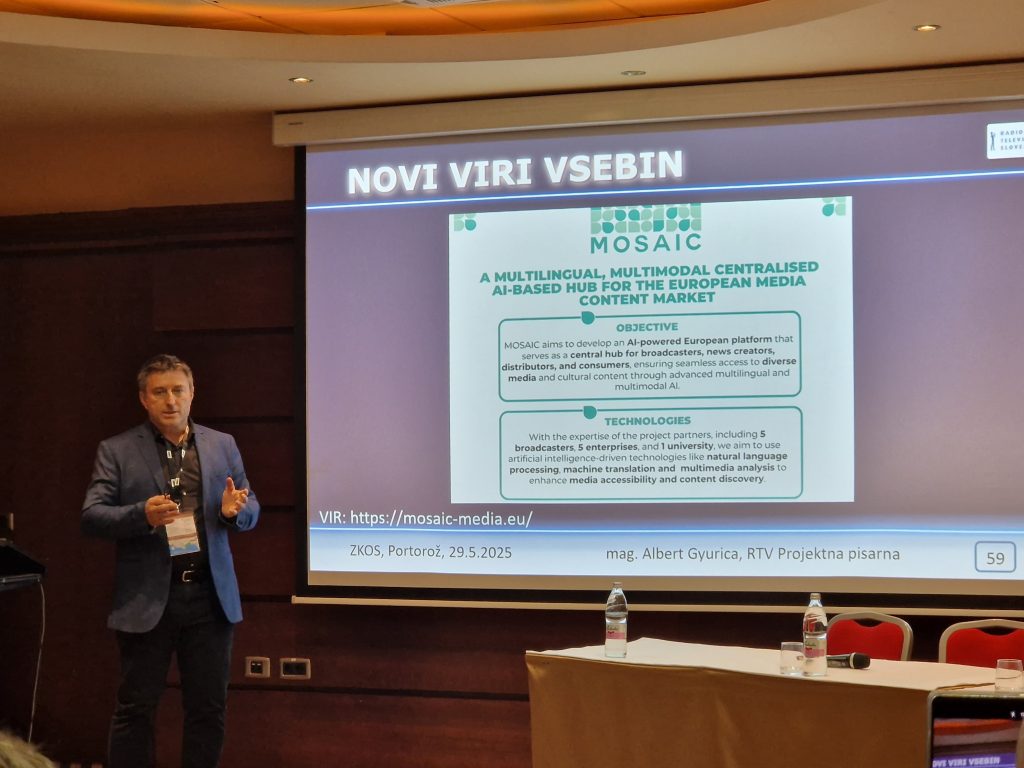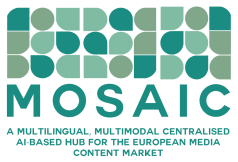Presented by Albert Gyurica, RTV Slovenija — 29 May 2025, Slovenian Cable TV Association Program Conference

As Slovenia prepares to meet the 28 June 2025 deadline mandated by the EU Accessibility Act (2019), public service media face both legal imperatives and moral obligations to ensure that audiovisual content is accessible to all. With a deep tradition of subtitling and a rapidly aging population—augmented by growing numbers of international residents—Slovenia’s “undevidible triple” of picture, sound, and subtitles must evolve to meet modern demands. Artificial intelligence (AI) offers tremendous promise, but technical, linguistic, and quality-assurance challenges remain.
The evolving media landscape necessitates a modern approach to content delivery, particularly focusing on accessibility for all viewers. In Slovenia, accessibility fundamentally relies on the undevidible triple components of media: picture, sound, and subtitles. While legislation—specifically referencing the deadline of 28 June 2025, set by the EU Accessibility Act of 2019—drives compliance, the need for accessibility is also amplified by an aging population and the growing presence of international residents. Providing accessible content is not just a legal obligation; it is a matter of human rights: ensuring the right to information, respect, and social inclusion for every citizen.
AI is increasingly seen as a crucial tool to enhance accessibility, such as through voice synthesis that can read on-screen text for the visually impaired. However, leveraging AI for tasks like generating accurate, real-time subtitles presents technical challenges. Current global AI tools often struggle with context and specific local language nuances, such as dialects, idioms, and homonyms. Transcripts generated by AI are not the same as properly prepared, formatted, and timed subtitles, which require careful context-based preparation in accordance with official language rules, placement that allows viewers to follow both the image and the text, and timing that supports comprehension of the information displayed. At present, these requirements can only be fully met through manual review and correction. Public service media must therefore follow these rules and ensure the highest possible quality within available resources. To support viewers, RTV Slovenija includes subtitle quality indicators in its electronic program guides.
Given the small and fragmented Slovenian market, a unified, innovative, and future-proof national TV platform is proposed as a solution to technical challenges and market constraints. Such a platform could facilitate collaboration across the industry, drawing inspiration from models like Germany’s TV Platform. A shared infrastructure would lower per-channel costs for AI transcription, audio description, and metadata management, and provide a central testbed for innovation. This would accelerate the implementation and testing of new accessibility techniques—such as real-time AI consistency checking and automatic glossary application—and help secure EU cohesion and innovation funding. It would also enable local and regional broadcasters to provide accessible content without building their own costly backend systems.
There is also a significant opportunity to connect this national effort with broader European initiatives. RTV Slovenija is a partner in MOSAIC, a prototypical European AI-enhanced platform designed as a central hub for media content. MOSAIC leverages sophisticated multilingual and multimodal AI to link content repositories and overcome language barriers, enabling, for example, French content to be available in Slovenian through synthesis and subtitling.
Possible technical integration via APIs between a Slovenian platform and MOSAIC could allow AI-based tools from MOSAIC to deliver further personalized user experiences, perhaps acting as a smart advisor within set-top boxes or streaming apps. This connection would also mean that the rich, diverse content aggregated by MOSAIC could become available as video-on-demand assets directly on the Slovenian platform, adapted instantly for local audiences and fully compliant with national accessibility rules.
This collaborative, AI-driven approach represents a path forward for Slovenia’s media sector to navigate technological advancements and legislative demands while enhancing accessibility and the user experience. By combining AI innovation, national collaboration, and European integration via MOSAIC, Slovenia can meet the challenges ahead and ensure no viewer is left behind.
